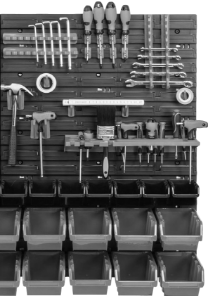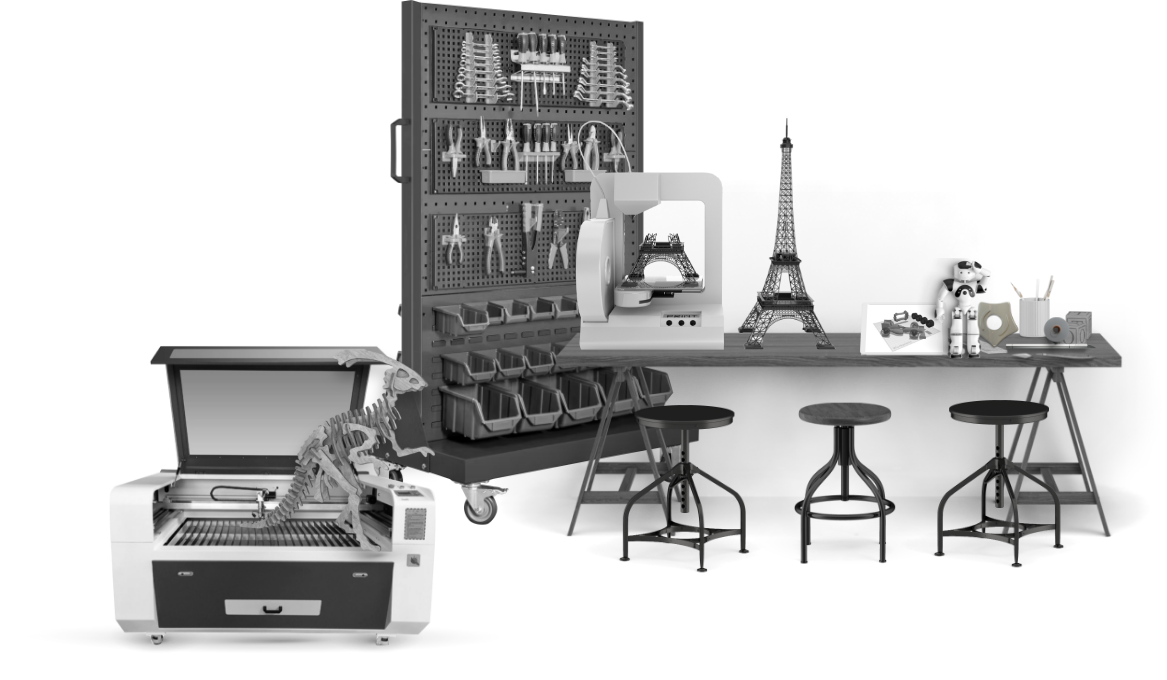Maker Studio THE INNOVATION SCHOOL









The school’s concept
We didn’t reinvent school. We reverted to developmental psychology and the science of knowledge acquisition to redesign it.
HEAD, HANDS, SENSES
A child plays and learns using all of its biological superpowers: cognitive (head), motor (hands) and sensory (senses) functions.
DEVELOPING POTENTIAL
The child works at the limit of his potential: he uses what he already knows, but he’s curious to discover and learn new things.
I’M A BOSS
The child’s interests are both the driving force and the subject of his subsequent discoveries. Thanks to this, he’s highly motivated to implement and manifest his own ideas.
I’M A DESIGNER
The child, contrary to appearances, plans his play in detail: how, with whom and with what to play. The last item must first be designed and built. From the moment a toy’s invented, there are many stages, and each of them teaches the child something valuable.
THE PARENT = THE PLAY’S ARCHITECT
The parent closely accompanies the child in the process of playing and gaining experience. They provide him with creative tools and supports him in terms of content, building a specific creative scaffold.
TOOLS AND CREATIVE ENVIRONMENT
The play occurs in a place that stimulates creative thinking with objects that have many uses and make the child a creator. It all takes place in the company of other creators, whom the child can observe, cooperate with and be inspired by.
HEAD, HANDS, SENSES
In order for an idea to become a real product, the student must carry out many microprocesses along the way, for which he uses his mental, motor and sensory skills.
DEVELOPING INTERESTS
A high school student works on turning his ideas into real, functional products (physical or digital), based on his own interests and deepening them. In the testing process, he improves his product, discovering completely new needs and possibilities.
I’M A BOSS
It’s the student who decides which way to direct his creative activities and which ideas he decides to implement by facing problematic design challenges. Thanks to the fact that he quickly sees the effect of his work, he gains further motivation to act and learns through experience.
I’M A DESIGNER
A high school student creates a product that is supposed to meet the needs of its future users in the best way. In this process, he learns that his product must first and foremost be useful. On this winding road to finding the perfect solution, the young designer encounters many eye-opening situations.
THE STUDIO GUIDE = TEACHER
Since our student is the author and implementer of his own ideas, he doesn’t need a traditional teacher who provides him with ready-made answers. The Studio Guide helps the child find the right solution for himself. He acts as an assistant who helps the student through the creative process. That’s why in studio pedagogy, we put practitioners and experts - engineers, architects, artists and designers - in this role.
MAKERSPACE = CREATIVE ENVIRONMENT
We replace the traditional classroom, designed to consume knowledge, with a makerspace in which the student manifests his ideas and constructs them. Here, at our fingertips, are tools with a wide range of applications that enable the fabrication of innovative physical and digital products. The student works and collaborates with other creators who are a source of inspiration for him and the first recipients of his ideas.
How do we teach?
Have you ever wondered what will happen when we reverse the teaching process and start with experience and not, as in traditional school, from theory? We don’t wonder anymore – we just do it. We’ve based our school on the studio pedagogy, thanks to which we introduce STEM (Science, Technology, Engineering, Maths) sciences by using them to solve real problems.



Where do we teach?
Along with the learning process, the space in which we work also changes. In our school, the lecture room is replaced by a workshop full of tools that allow the student to manifest his ideas in the form of working prototypes created, among others, in 3D printing technology. The makerspace is a creative space where STEM and Art meet and interact to provide complete solutions together.






